Foldscoping in South India
 Sep 25, 2015 • 4:23 PM UTC
Sep 25, 2015 • 4:23 PM UTC Unknown Location
Unknown Location 140x Magnification
140x Magnification Microorganisms
Microorganisms
laksiyer
Human observer of life. https://sukshmadarshin.wordpress.com
97posts
1255comments
5locations

My journey into the microscopic world began in Chennai some three decades or more ago with a simple bulb microscope (40x). So it was no wonder that I was really excited to revisit my childhood with a foldscope. Chennai is a bustling metropolis in the South-east of India. Being along the Bay of Bengal, it is near some of the most sought after beaches and is a cosmopolitan city with a lot of cultural activities. From a biological viewpoint, its sub- tropical climate with three types of seasons (hot, hotter and hottest is the joke) is perfect for diverse life forms as can be evidenced from the green canopies of the city. However, over time parts of the city has transformed into a concrete jungle. Slinks, Snakes and Sparrows, companions of my childhood are nowhere to be seen in residential areas. The house sparrow is essentially extinct in the city, although the crows, cuckoos and mynahs still dominate the aerial landscape.
Given my recent interest in foldscoping pollen shapes, I concentrated on the floral landscape of the city. I also studied flowers that I picked in the town of Pollachi and nearby places in the Western Ghats. However, this time I was so struck by the diversity of trichome types and positions that I consciously tried to image them too.
A few thoughts as I doing this:
1. In addition to secreting small molecules, do trichomes give the apparently symmetric flowers an asymmetry that is perhaps only appreciated by the little invertebrates?
2. The diversity of trichome shapes and positions is staggering. Clearly they have selective advantages for the flower. Each trichome is a science project with so many aspects that can be studied– Mode of growth, function, role of the shape!! If each student studying high school botany took up a plant trichome. we might have some fascinating answers.
3. Is there a regional average for pollen size for insect pollinated plants? Would it not be interesting to measure pollen size of various native species across the world and study the distribution of their sizes and compare it to the geography? This thought came to me as on an average, I saw really large pollen in the insect pollinated Indian flora, compared to what I see in the DC area. I couldnt help wondering if insect pollinated plants that are more abundant in the tropics have larger pollen on an average or have some relationship to the types of insects pollinating them.
4. Homeotic mutations are everywhere in the floral world and I record one more in the Yellow trumpet bush (Tecoma stans) plant. Here a stamen has been converted to a petal. See previous post on homeotic mutations .
5. One of the most amazing flowers I saw belonged to the Golden shower tree/Kannikonna in Malayalam ( Cassia fistula ) which had three levels of stamens. The longest one is apparently fertile and some of the shorter ones sterile. Although I saw pollen in the shorter one too. I suspect in this instance the flower has specialized, sterile pollen which the insects eat and fertile pollen are dropped on their back. This is also known as the Onam flower as it is used during the Onam festivities.
6. Finally after almost a year of investigations, I conclude that in general, barring the asteraceae there is no correlation between pollen size and shape at the family level. Look at the pollen, flowers and trichomes of different Fabaceae below. This clearly shows that pollen are a fast evolving character. On the other hand the Asteraceae pollen are quite stereotypic.
7. Mimosa pudica, the touch me not plant, has the smallest measured pollen in my set and is about 3-5 microns in size.
There are still a few unidentified plants, foldscopers help!! Also, all this will be ported into the next update of the pollen database. Cant help dreaming what school summer-breaks would have been like in India with a foldscope.
Click on the thumbnail pics for hi-res images.
Acknowledgments: The flowersofindia.net website is a great place to identify native flowers. R. Bhanumathi for rapidly solving my taxonomic crisis and quickly identifying many of the flowers in my collection.
Flower Petal image Trichomes Pollen Common/Species name Family Name/Notes
Given my recent interest in foldscoping pollen shapes, I concentrated on the floral landscape of the city. I also studied flowers that I picked in the town of Pollachi and nearby places in the Western Ghats. However, this time I was so struck by the diversity of trichome types and positions that I consciously tried to image them too.
A few thoughts as I doing this:
1. In addition to secreting small molecules, do trichomes give the apparently symmetric flowers an asymmetry that is perhaps only appreciated by the little invertebrates?
2. The diversity of trichome shapes and positions is staggering. Clearly they have selective advantages for the flower. Each trichome is a science project with so many aspects that can be studied– Mode of growth, function, role of the shape!! If each student studying high school botany took up a plant trichome. we might have some fascinating answers.
3. Is there a regional average for pollen size for insect pollinated plants? Would it not be interesting to measure pollen size of various native species across the world and study the distribution of their sizes and compare it to the geography? This thought came to me as on an average, I saw really large pollen in the insect pollinated Indian flora, compared to what I see in the DC area. I couldnt help wondering if insect pollinated plants that are more abundant in the tropics have larger pollen on an average or have some relationship to the types of insects pollinating them.
4. Homeotic mutations are everywhere in the floral world and I record one more in the Yellow trumpet bush (Tecoma stans) plant. Here a stamen has been converted to a petal. See previous post on homeotic mutations .
5. One of the most amazing flowers I saw belonged to the Golden shower tree/Kannikonna in Malayalam ( Cassia fistula ) which had three levels of stamens. The longest one is apparently fertile and some of the shorter ones sterile. Although I saw pollen in the shorter one too. I suspect in this instance the flower has specialized, sterile pollen which the insects eat and fertile pollen are dropped on their back. This is also known as the Onam flower as it is used during the Onam festivities.
6. Finally after almost a year of investigations, I conclude that in general, barring the asteraceae there is no correlation between pollen size and shape at the family level. Look at the pollen, flowers and trichomes of different Fabaceae below. This clearly shows that pollen are a fast evolving character. On the other hand the Asteraceae pollen are quite stereotypic.
7. Mimosa pudica, the touch me not plant, has the smallest measured pollen in my set and is about 3-5 microns in size.
There are still a few unidentified plants, foldscopers help!! Also, all this will be ported into the next update of the pollen database. Cant help dreaming what school summer-breaks would have been like in India with a foldscope.
Click on the thumbnail pics for hi-res images.
Acknowledgments: The flowersofindia.net website is a great place to identify native flowers. R. Bhanumathi for rapidly solving my taxonomic crisis and quickly identifying many of the flowers in my collection.
Flower Petal image Trichomes Pollen Common/Species name Family Name/Notes
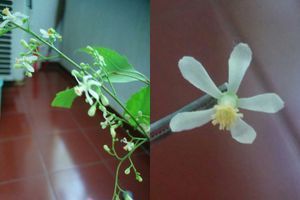
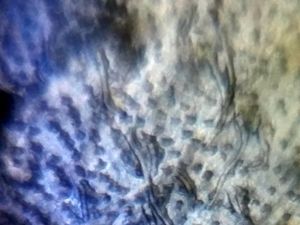

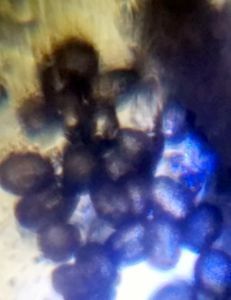
Neem/ வேப்பை (Azadirachta indica) Meliaceae Observed in Chennai, August 2015.Flowers in a panicle. One of the hairiest petals with two types of trichomes. Pollen 40-50 microns. It struck me that the pollen were so large for such a small flower.
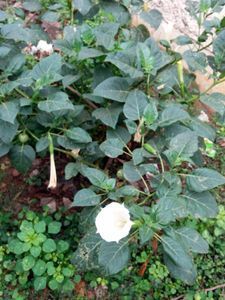
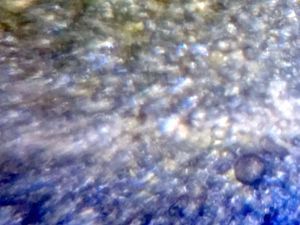
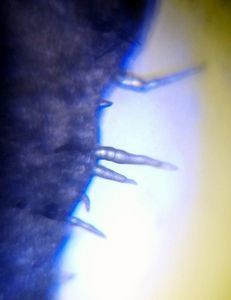
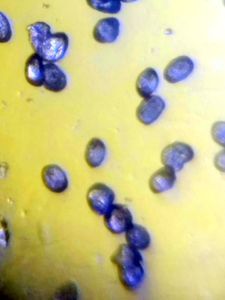
Datura/Angel’s trumpet (Datura sp.) Solanaceae Observed in Chennai, August 2015.A toxic/medicinal plant commonly found on the roadside. Petal thick and leathery. Pollen size ~40-50 microns, Trichomes along edge of petal.
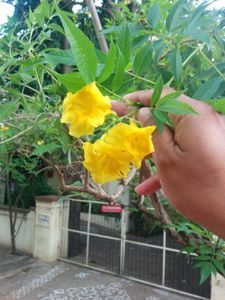
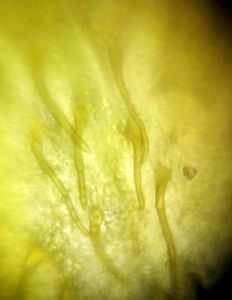
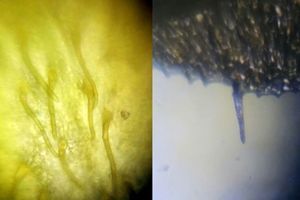
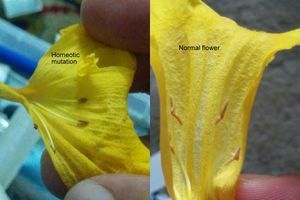
Yellow trumpet bush ( Tecoma stans ) Bignoniaceae Observed in Chennai, August 2015.Commonly grown as a shrub. South american import. Trichomes all over petal and along edge. One of the versions had a homeotic mutation where the stamen was convered to a petal. I couldnt get any pollen and so I have inserted the homeotic mutation, where one of the stamens has been transformed into a petal.
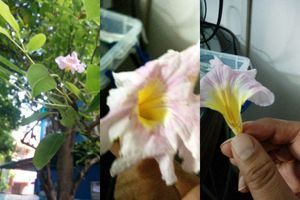
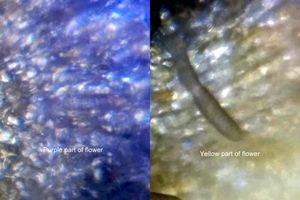
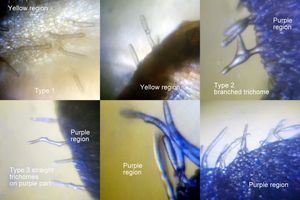
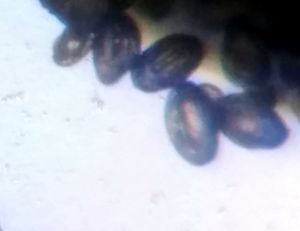
Trumpet tree (Tabebuia berteroi) Bignoniaceae Observed in Chennai, August 2015. Most remarkable trichome distribution. The Yellow part of the corollar tube has several trichomes. The purple top has branched trichomes at the edge. Pollen ~ 30 microns in size. Imported species
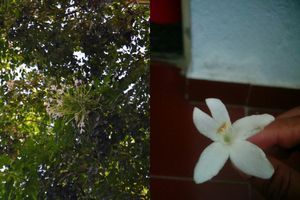
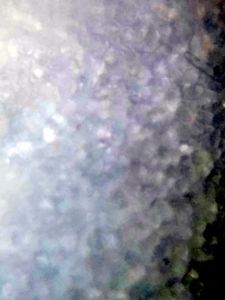
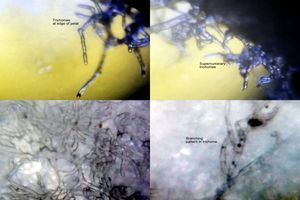
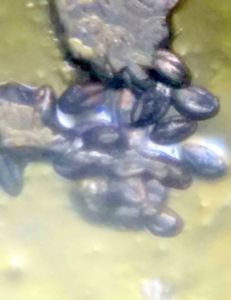
Indian cork tree/ नीम चमेली/ கட் மல்லீ ( Millingtonia hortensis ) Bignoniaceae Extremely fragrant flowers observed in Chennai August 2015. Trichomes all over the petal and can be seen quite visibly. They are usually branched. The distinguishing feature of the petals are that there are four of them and one of them is cleaved/clefted. Pollen ~40-50 microns.


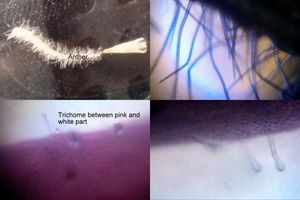

Common oleander/அரளி ( Nerium oleander ) Apocyanaceae Observed in Chennai, August 2015.Commonly grown garden plant in chennai and also the source of floral offerings to dieties. Known to be toxic. Stamens have trichomes. Pollen ~30 microns. The corolla tube had a second set of petals with pink streaks. Incredibly trichomes are seen emerging from the pink part to the white and more so towards the base of the flower. Why this asymmetry?




Oleander/அரளி ( Nerium oleander ) Apocyanaceae Yellow Arali observed in Chennai, August 2015. The yellow Arali has spear-like trichomes at the base of the petal. Large pollen ~ 90 microns
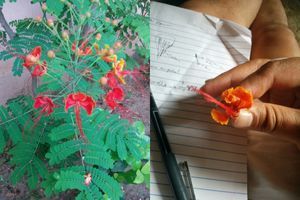

No obvious petal trichomes that I could see
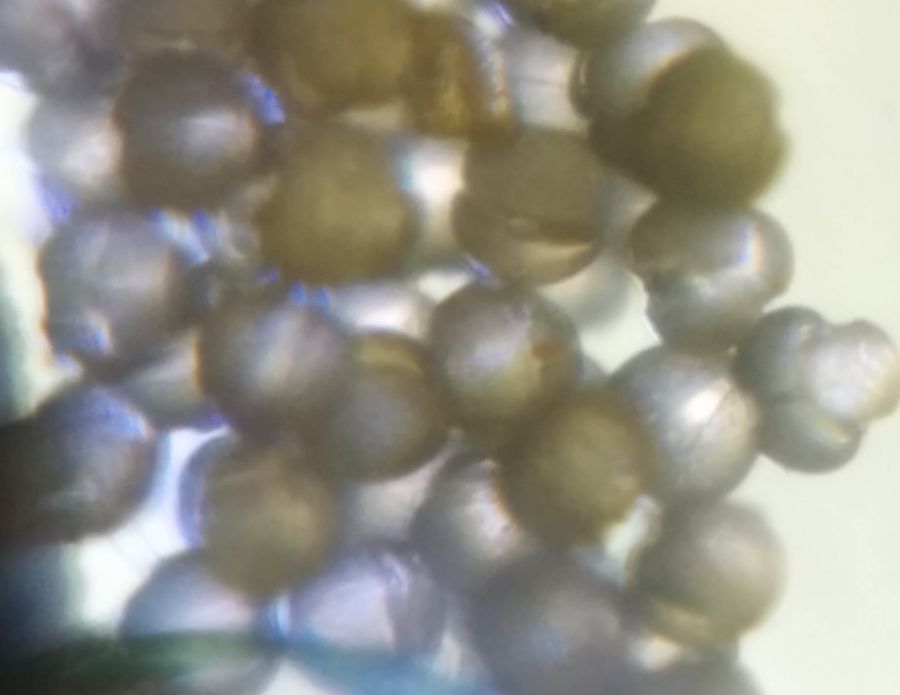
Peacock flower ( Caesalpinia pulcherrima ) Fabaceae Small shrub observed in Chennai, August 2015. Stamens are extra long. Large pollen in tetrads (~50 microns in size), like the Catalpa pollen. Are these closely related or is this convergence? Convergence I think. Didnt observe any obvious trichomes.

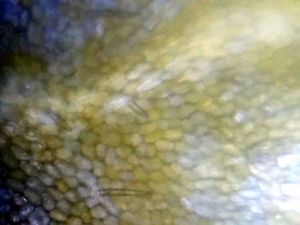
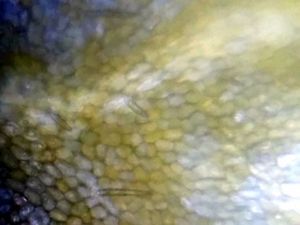
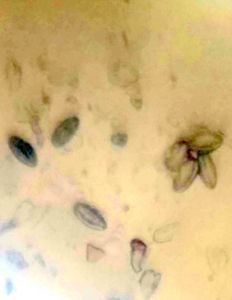
Golden shower tree/Kannikonna (Malayalam) ( Cassia fistula ) Fabaceae State flower of Kerala observed in Chennai, August 2015. Blooms around Onam. Flowers in a raceme and look like a grape-bunch. Although there are multiple types of anthers, I could get pollen from the tallest and the some of the smaller ones. Pollen size ~ 40 microns. I didnt realize during sampling that some could be sterile. A single trichome type in petal.
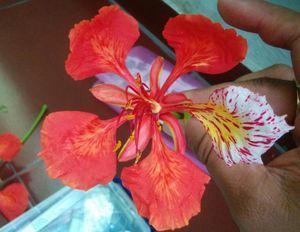

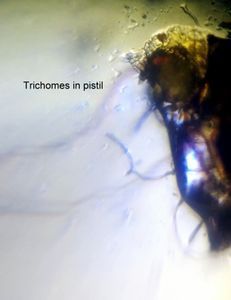

Flambuoyant tree ( Delonix regia ) Fabaceae A kind of Gulmohar tree. Caesalpinid legume observed in Chennai, August 2015. Commonly found across Chennai. One of the leaves shows variegation in the petal color suggestive of gene silencing. Large yellow pollen with rough surface and ~50 microns in size. Trichomes only on pistil (Need a better pic)
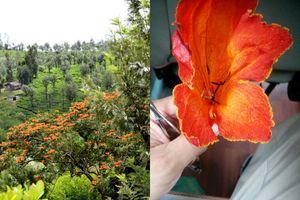
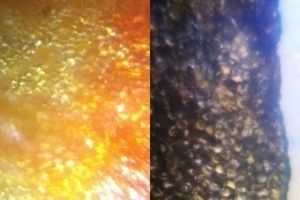
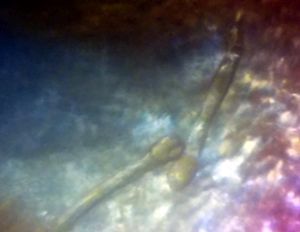
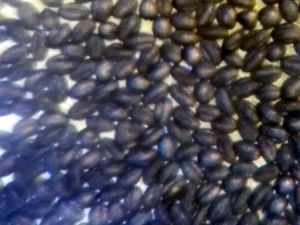
Flame of the forest/पलाश( Butea monosperma ) Fabaceae Was in full bloom in the month of August, 2015 in Valparai. Striking tree. Flowers have leathery petals with large pollen (~40 microns). A very interesting trichome shape was observed. See previous post for more details.
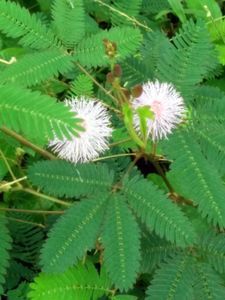
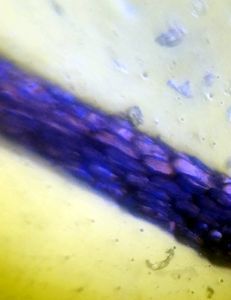
No trichomes visible
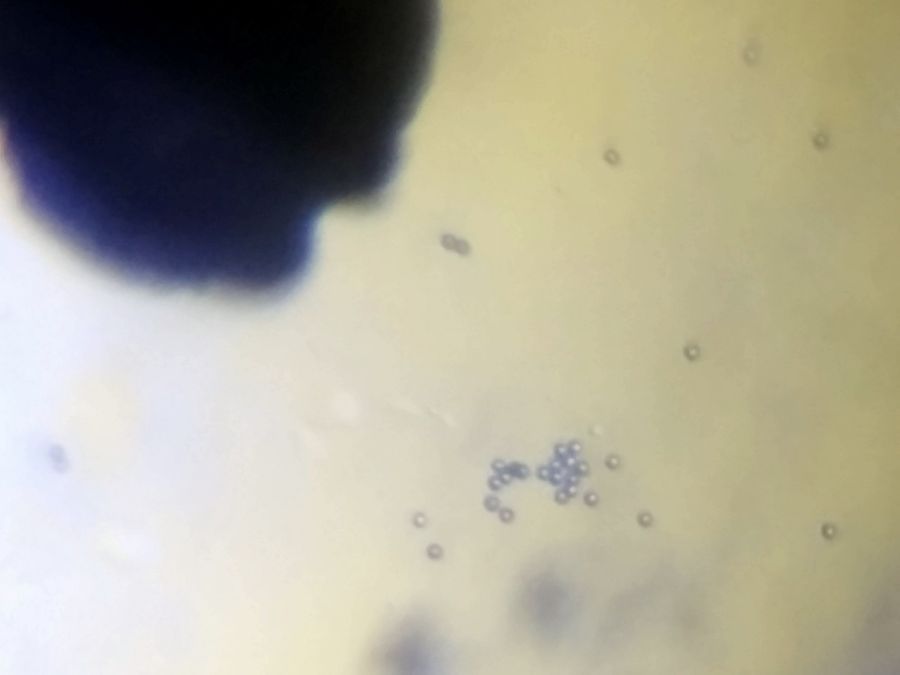
Touch me not ( Mimosa pudica ) Fabaceae 3-5 micron pollen. Smallest pollen I have seen this far (I had to get a shot of two pollens side by side to get a size estimate). The plant was at the edge of the Parambikulam Tiger reserve (August 2015), definitely an invasive species, though not as prevalent. Stamens dominate the flower. Only got an image of the stalk of the stamen. Couldnt really see any trichomes on the fly.
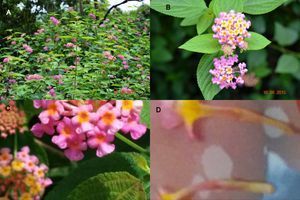
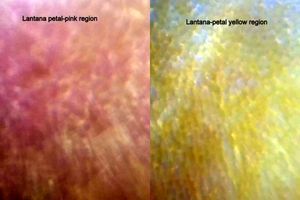
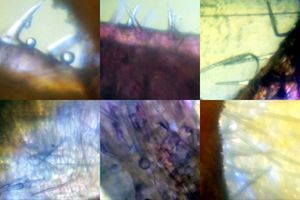
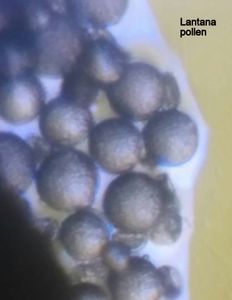
Wild sage ( Lantana camara ) Verbenacea Common invasive species in Valparai. Observed in August 2015. Trichomes of two types were seen. Pollen size 40-50 microns. See previous post for more details on the invasive species problem




( Duranta erecta ) Verbenaceae Observed at Pollachi, India in August 2015. Pollen size 30-40 microns. remarkable trichomes at edge of petal. Another invasive plant



No obvious pollen Moss verbena/ Mock Vervain ( Glandularia pulchella ) Verbenaceae Observed in Pollachi, Tamil Nadu, August 2015. Another invasive plant. There were at least 3 different colors of this type that were growing together. 4 types of trichomes on stalk of stamen. Pretty remarkable. One of them reminded me of the trichome of the spiderwort plant

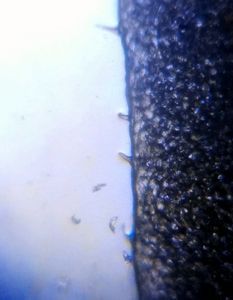
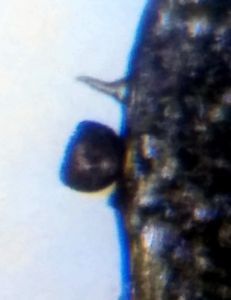
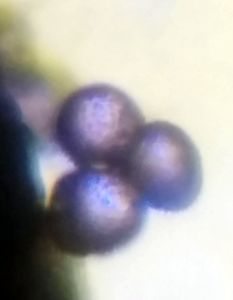
Indian privet ( Clerodendrum inerme)
also ( Volkameria inermes ) Lamiaceae (formerly Verbenaceae) Common ornamental observed in Chennai, August 2015. Large purple pollen. Size ~40-50 microns. Apparently has medicinal properties.
also ( Volkameria inermes ) Lamiaceae (formerly Verbenaceae) Common ornamental observed in Chennai, August 2015. Large purple pollen. Size ~40-50 microns. Apparently has medicinal properties.

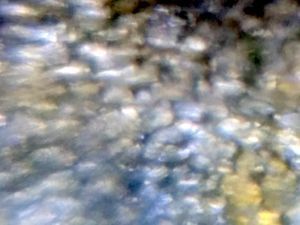
Didnt find any obvious trichomes on petal
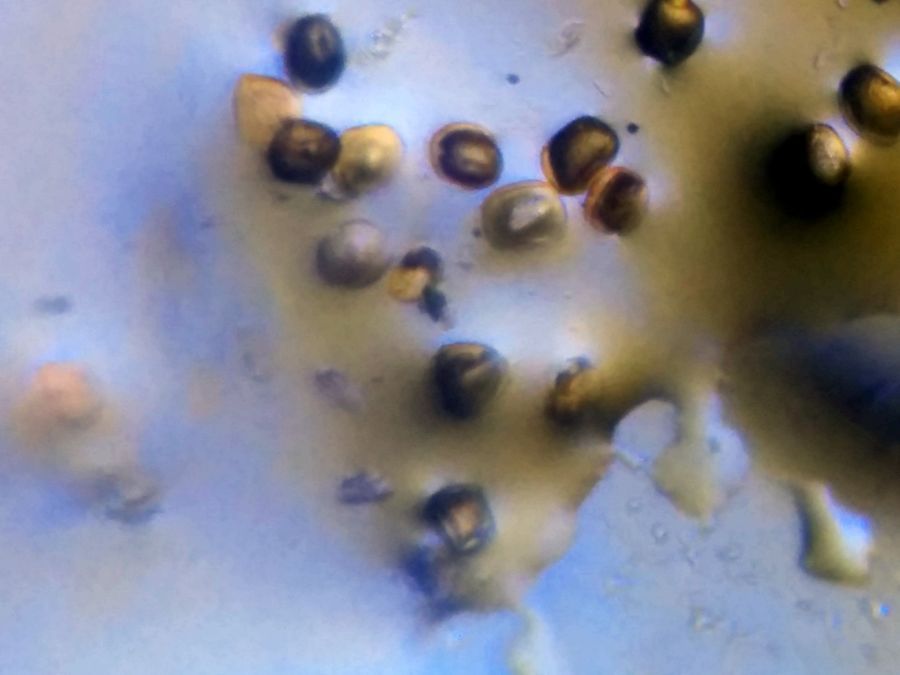
Tea ( Camellia sinensis ) Theaceae Flower picked from Valparai, India in August 2015. A lone flower. Lots of stamen, nice yellow pollen of size about 40 microns.



No obvious pollen seen some kind of aster Asteraceae Observed in Valparai at a tea shop August 2015. Trichomes like a fine set of teeth along edge of petal. Petals have yellow streaks that are only obvious under the foldscope.
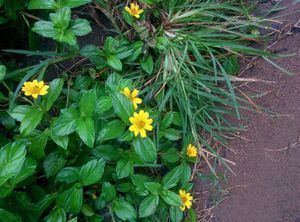
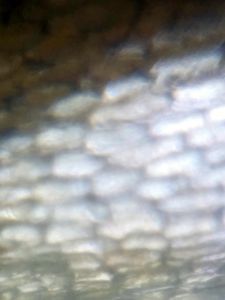
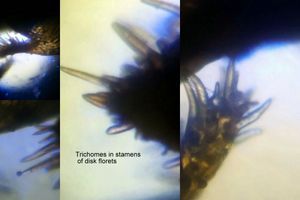
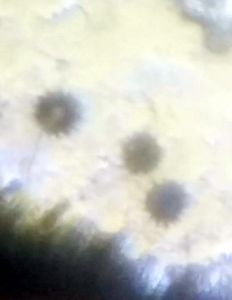
Common/Species name Asteraceae Observed in topslip, Tamil Nadu, August 2015. The stamens of the ray florets are full of trichomes. Pollen size ~20 microns
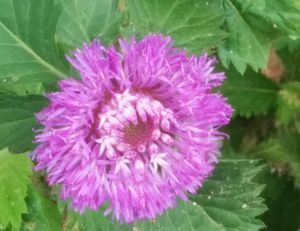
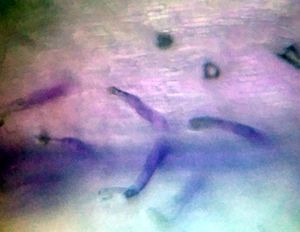
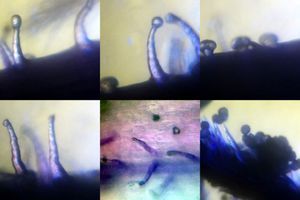
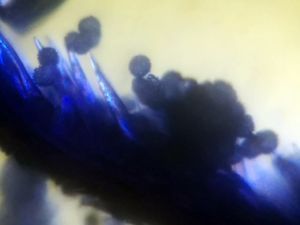
Common/Species name Asteraceae Observed in Parambikulam tiger reserve, August 2015. Purple compositan. Two types of trichomes on petals and one type on stamen. Pollen size ~20 microns


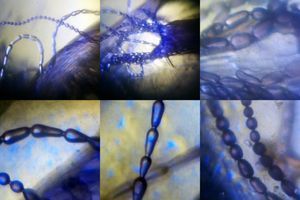
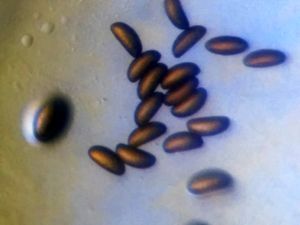
Dew flower/Spiderwort (Trandescantia) Commelinaceae Spiderwort, observed in a closed state at Pollachi, August 2015. Remakrable trichomes that reminds me of a midnight exploration of this plant with Manu at the National geographic building, DC area. Pollen size ~40-50 microns.

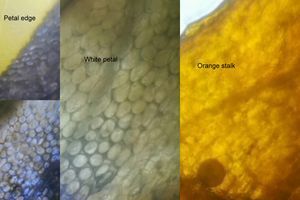
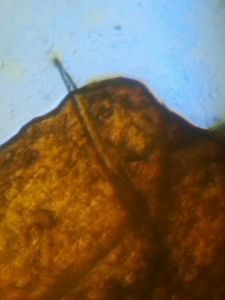
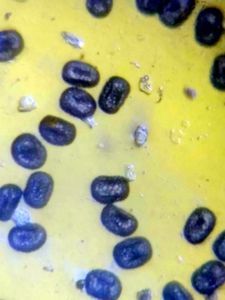
Parijatam/पारिजात/பவழ மல்லி/coral jasmine (Nyctanthes arbor-tristis) Oleaceae A plant grown all over Chennai and used for making floral offerings to deities Observed August 2015). It blooms at night. The flower doesnt last long when plucked and fades away rapidly by day. It has white petals and an orange petal stalk. A trichome was observed in the orange part. Pollen ~ 60 microns. Official flower of the State of West Bengal, India.
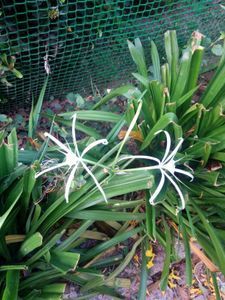
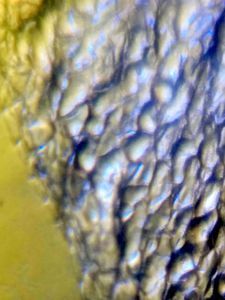
No obvious trichomes
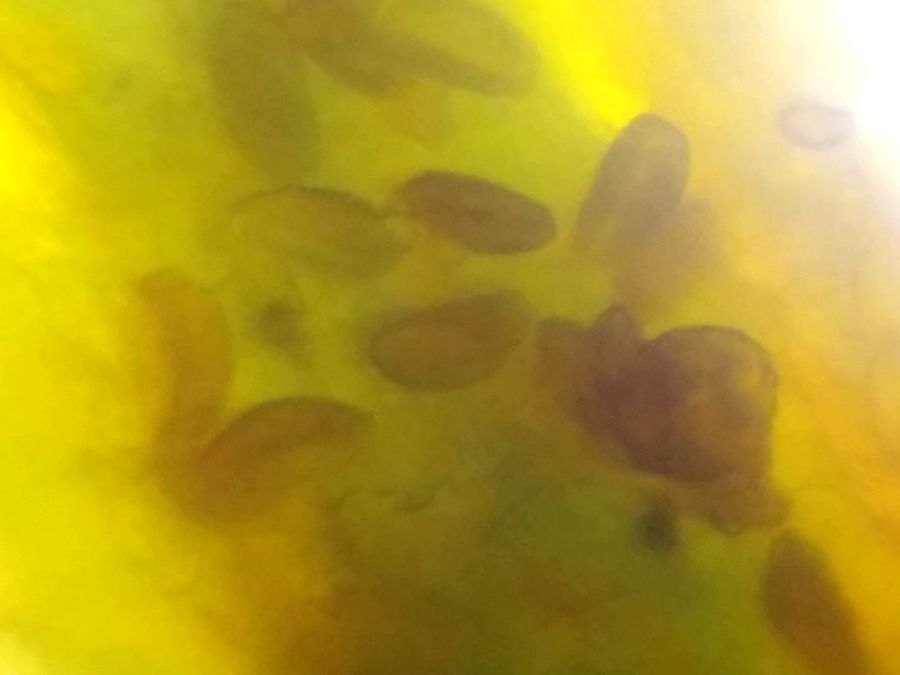
Spider lilly Amaryllidaceae (Monocot) Observed in Chennai, August 2015. Didnt get very good shots as it was done on the fly. Pollen size ~ 50 microns.
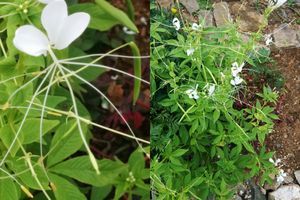
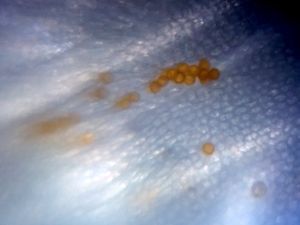
No obvious trichomes observed
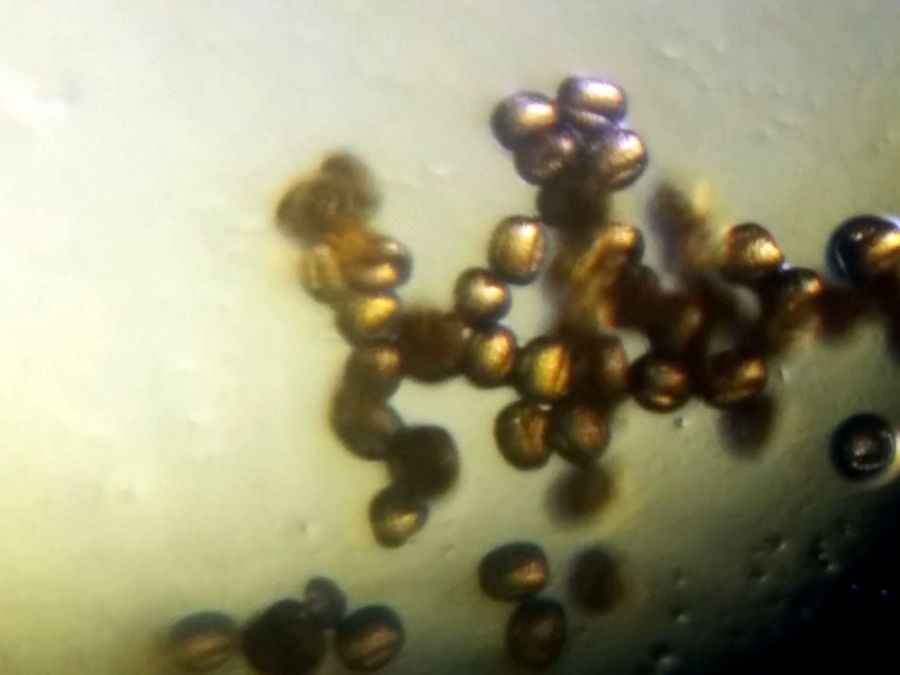
Some kind of spiderlilly Amaryllidaceae (Monocot) Observed at a tea shop in Valparai, August 2015. Pollen size 20-25 microns. Nice yellow color.

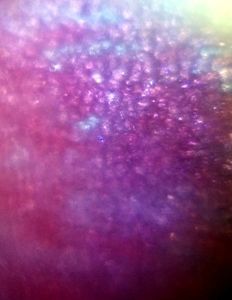

No obvious pollen observed. ? ? Common ornamental plant found in Chennai, August 2015. A single type of trichome was observed. However no pollen were seen.

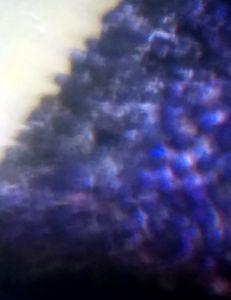
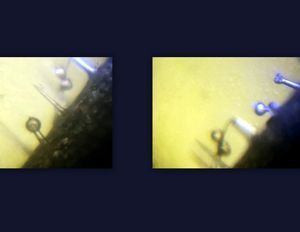
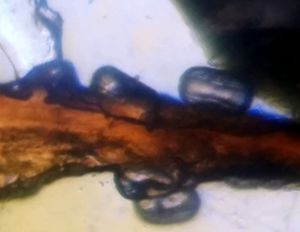
? ? Observed between Coimbatore and Pollachi, August 2015. Pollen size 40-50 microns, quite an interesting shape. At least two types of trichomes. One with a spherical top and the other one straight.

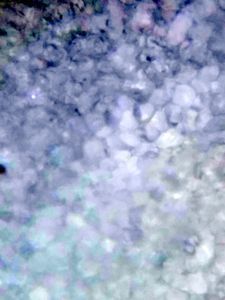
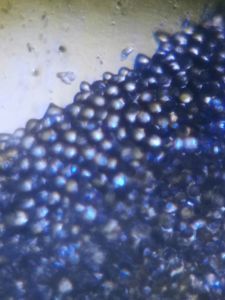
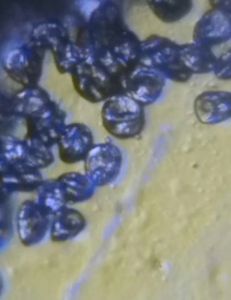
? ? White flower with a yellow center observed in Chennai, India, August 2015. Pollen size 20-25 microns. The edge of the petal had bumps that might be trichomes but am not too sure they are. Flower
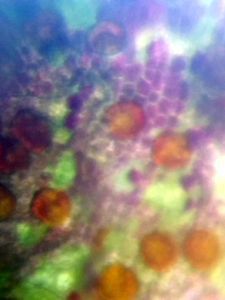
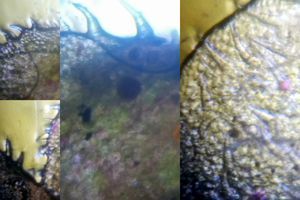
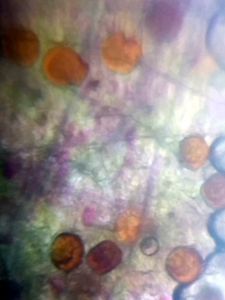
? ? Flower from a succulent plant observed at R. Bhanumathi’s place, Chennai, in August 2015. Dont have a picture of the plant but they show wonderful pollen and trichomes. The flower may have been 1/2 inch wide while the orange pollen was about 50 microns in size. The succulent petal shows some purple spots. No picture of flower though.
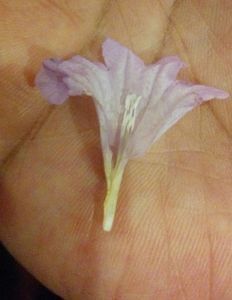
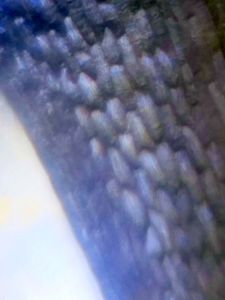
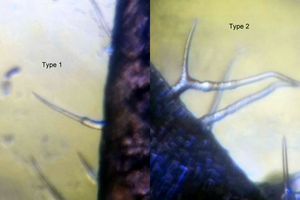
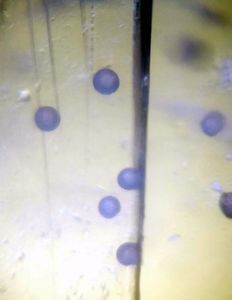
? ? Observed in Topslip, India, August 2015. Really large pollen ~60 microns in size. Two types of trichomes, one of which is beautifully branched.
Sign in to commentNobody has commented yet... Share your thoughts with the author and start the discussion!

 0 Applause
0 Applause 0 Comments
0 Comments_300x300.jpeg)

















